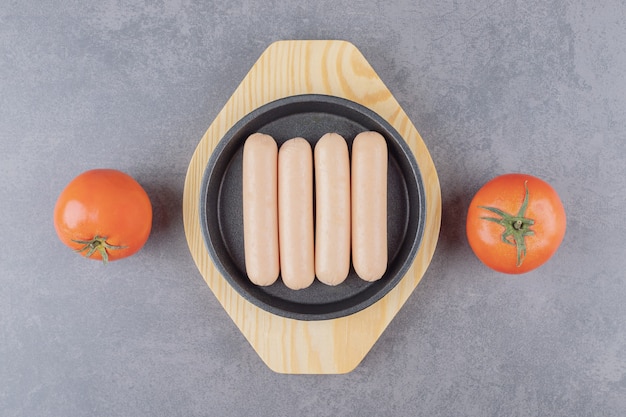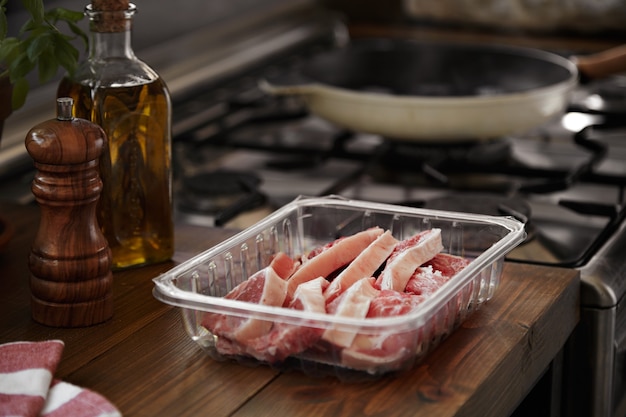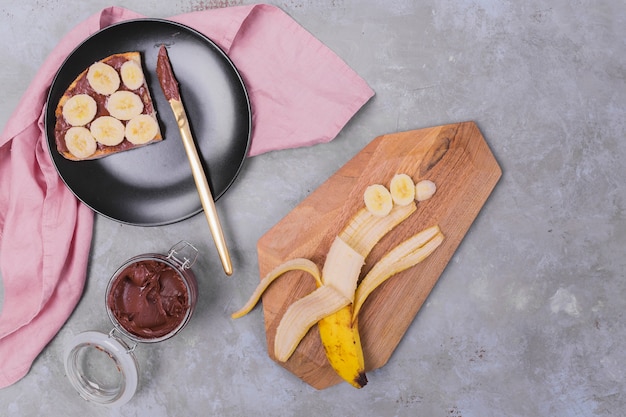There's something undeniably satisfying about a perfectly pan-seared sausage. That golden-brown crust, the irresistible aroma filling the kitchen, and the juicy, flavorful bite – it's a symphony of textures and tastes that just hits the spot. But achieving that level of culinary perfection isn't always a walk in the park. Over the years, I've learned a few tricks and honed my skills to consistently create sausages that are both visually appealing and bursting with flavour. So, buckle up, because this is your comprehensive guide to achieving pan-searing mastery.
(Part 1) The Sausage Saga Begins

1.1 The Pan: Choosing Your Culinary Weapon
The pan you choose is crucial for achieving a perfect sear. A heavy-bottomed pan is ideal, as it distributes heat evenly and helps prevent sticking. Cast iron is a classic choice for its exceptional heat retention, creating a beautiful sear. However, stainless steel pans also work well and are generally easier to clean. Don't rule out a non-stick pan if that's your preference – just make sure it's oven-safe if you plan on finishing the sausages in the oven.
I personally love using my trusty cast iron skillet. It's seasoned with years of cooking, adding a layer of flavor that's hard to replicate. Plus, it heats up quickly and retains heat beautifully, ensuring a consistent sear on every sausage.
1.2 The Sausage: Finding Your Perfect Match
The world of sausages is vast and delicious, offering a spectrum of flavors and textures to suit every taste. From classic pork sausages to spicy Italian varieties, Cumberland sausages, and even vegetarian options, there's a sausage out there for everyone. My personal preference leans towards pork and apple sausages – the sweetness of the apple beautifully complements the savory sausage flavour. It's a combination that always leaves me craving for more.
Don't be afraid to experiment with different types of sausages. You might discover a new favourite that you never knew existed. And remember, the sausage you choose will play a significant role in the overall flavour profile of your dish.
1.3 The Preparation: Getting Ready for the Culinary Battle
Before you even think about firing up the stove, it's essential to prep your sausages. If they've been chilling in the fridge, let them come to room temperature for about 30 minutes. This helps them cook more evenly and prevents them from becoming cold spots in the pan. Additionally, remove any casings if you prefer a smoother texture. It's a matter of personal preference, but I find that removing the casings allows the sausage to cook more evenly and prevents them from bursting during the searing process.
Remember, a little preparation goes a long way in achieving the perfect pan-seared sausage.
(Part 2) The Pan-Searing Symphony Begins

2.1 The Oil: Finding Your Perfect Partner
Oil is your secret weapon in the pan-searing game. It creates that glorious golden-brown crust and prevents sticking, ensuring your sausages come out looking like culinary masterpieces. I prefer a neutral oil like vegetable or canola oil, as they have a high smoke point and won't impart any unwanted flavors. Olive oil can be used as well, but be cautious not to let it smoke, as this can affect the flavor of your sausages.
A thin layer of oil is all you need. Don't drown your sausages! Just enough to create a shimmering film across the pan is perfect for achieving that beautiful sear.
2.2 The Heat: Temperature Control is Key
Medium-high heat is your friend when it comes to pan-searing. I typically aim for around 350°F (175°C), but your stove and pan will influence the ideal temperature. The oil should shimmer and you should see wisps of smoke – this indicates that the pan is hot enough to create a beautiful sear. But be careful not to let the oil smoke excessively, as this can make your sausages taste bitter.
Practice makes perfect when it comes to temperature control. Experiment and find the heat level that works best for your pan and stove.
2.3 The Sear: Grilling Those Sausages to Perfection
Now, the fun begins! Carefully place your sausages in the pan, leaving some space between them for even searing on all sides. Overcrowding the pan will lead to uneven cooking and soggy sausages. I usually sear my sausages for about 5-7 minutes per side, turning them gently with tongs to prevent breakage. Remember, patience is key – let that beautiful golden-brown crust develop before flipping.
As you sear the sausages, you'll notice the aroma of sizzling meat and spices filling your kitchen – a delightful indication that your sausages are on their way to perfection. Just be sure to keep a close eye on them to prevent burning. You want a beautifully caramelized crust, not a burnt mess.
(Part 3) Finishing Touches: The Grand Finale

3.1 The Oven Finish: Taking Things to the Next Level
For extra-juicy and flavorful sausages, consider finishing them in the oven. Transfer your pan-seared sausages to a preheated oven at 350°F (175°C) and cook for an additional 5-10 minutes, or until they're cooked through. The oven's gentle heat will help the sausages cook evenly and allow the juices to redistribute, resulting in a tender and succulent final product.
Use a meat thermometer to check the internal temperature of the sausages. They are cooked through when they reach 160°F (71°C).
3.2 The Glaze Game: Adding That Extra Zing
Want to elevate your sausages to new heights? A glaze can transform your ordinary sausages into something truly extraordinary. A simple honey-mustard glaze or a spicy BBQ glaze are both excellent choices. However, don't be afraid to get creative and experiment with your own glaze combinations. The possibilities are endless!
Brush the glaze onto the sausages during the last few minutes of cooking, allowing it to caramelize and create a sweet and sticky coating. This glaze not only adds a beautiful sheen but also intensifies the flavour of your sausages.
3.3 The Resting Ritual: Letting Those Sausages Relax
Once your sausages are cooked to perfection, let them rest for a few minutes before serving. This allows the juices to redistribute throughout the sausage, resulting in a juicy and flavourful bite. Use this time to prepare your side dishes and let the aroma of your delicious sausages fill your kitchen. It's the perfect way to build anticipation for your culinary masterpiece.
(Part 4) The sausage sides: Completing the Picture
No sausage deserves to stand alone. A perfect pan-seared sausage deserves an equally perfect companion, a side dish that complements its flavor and enhances the overall dining experience.
4.1 The Starch Side: Adding Some Substance
A good starch is essential for a well-balanced meal. mashed potatoes, creamy polenta, or a simple side of rice provide a comforting element that balances the richness of the sausage. For a touch of seasonal flavor, consider roasted root vegetables like sweet potatoes or butternut squash. Their natural sweetness will complement the savory notes of the sausage and add a touch of vibrancy to your plate.
4.2 The Green Side: Bringing in the Freshness
A side of greens adds a refreshing element to your sausage dinner. A simple salad with a vinaigrette dressing, sautéed greens, or even a green bean casserole will do the trick. The contrast in textures and flavors will create a delightful sensory experience. Don't be afraid to experiment with different greens and dressings – you might discover a new favorite combination.
4.3 The Flavor Booster: Adding Some Extra Zing
To elevate your sausage dish even further, consider adding some flavor-enhancing elements. A dollop of mustard, a sprinkle of fresh herbs, or even a drizzle of balsamic glaze can add a touch of magic to your plate. These simple additions can create a symphony of flavors that will tantalize your taste buds.
(Part 5) Sausage Variations: Exploring Beyond the Basics
While a simple pan-seared sausage is delicious on its own, don't be afraid to get creative and explore different variations. There are endless possibilities for adding unique flavors and textures to your sausages.
5.1 Sausage with a Twist: Adding Some Flair
caramelized onions or roasted peppers are excellent additions to your pan-seared sausages. The sweetness of the onions and peppers complements the savory notes of the sausage, creating a more complex and nuanced flavor profile. You can also add fresh herbs like thyme or rosemary to the pan while searing for a fragrant kick. These aromatic herbs will infuse the sausages with a delightful depth of flavor that will leave you wanting more.
5.2 The Big Sausage Adventure: Making it a Meal
Sausages can be the star of the show! Use them to create a hearty pasta dish, a delicious pizza topping, or a comforting sausage and bean stew. Don't limit yourself to traditional pairings – get creative and explore the endless possibilities.
(Part 6) The Sausage Storage: Keeping it Fresh
Storing sausages properly is crucial for preserving their flavor and quality. Whether you're planning to use them within a few days or saving them for later, proper storage is key.
6.1 Storing Those Sausages: Keeping the Flavour Locked In
Sausages can be stored in the refrigerator for a few days or frozen for longer storage. If storing them in the refrigerator, wrap them tightly in plastic wrap or aluminum foil. For freezing, wrap them tightly and store them in a freezer-safe bag. The airtight seal will help prevent freezer burn and preserve the flavor and texture of your sausages.
6.2 Sausage Shelf Life: Knowing When to Say Goodbye
Fresh sausages will last for 3-4 days in the refrigerator. Frozen sausages can be stored for up to 3-4 months. Remember, it's always best to check the "use by" date on the packaging. While sausages can be frozen for several months, their flavor and texture will deteriorate over time. Enjoy your frozen sausages within a few months for the best results.
(Part 7) Sausage Safety: Cooking Those Sausages Right
food safety is paramount when handling and cooking sausages. Ensure you're taking the necessary precautions to prevent foodborne illnesses and enjoy a safe and delicious meal.
7.1 Sausage Temperature: Ensuring Those Sausages Are Cooked Through
Always cook sausages thoroughly to avoid any foodborne illnesses. Use a meat thermometer to ensure the internal temperature reaches 160°F (71°C). You can also check the sausage by cutting into it. The inside should be cooked through and no longer pink. If the sausage is still pink in the center, continue cooking until it reaches the safe internal temperature.
7.2 The Cross-Contamination Concern: Keeping Those Sausages Clean
Prevent cross-contamination by washing your hands thoroughly with soap and water after handling raw meat. Also, use separate cutting boards and utensils for raw meat and cooked food. This simple step can significantly reduce the risk of foodborne illnesses and ensure a safe meal.
(Part 8) Sausage FAQ: Addressing Your Questions
FAQs:
| Question | Answer |
|---|---|
| Can I use any type of oil for pan-searing? | You can use any type of oil you like, but I recommend using a neutral oil like vegetable or canola oil. These oils have a high smoke point and won't impart any unwanted flavors. Olive oil can work well, but be careful not to let it smoke, as this can affect the flavor of your sausages. |
| How do I know if my sausages are cooked through? | Use a meat thermometer to check the internal temperature of the sausage, which should reach 160°F (71°C). You can also check by cutting into the sausage – the inside should be cooked through and no longer pink. |
| Can I make my own sausage glaze? | Absolutely! Get creative with your own sausage glaze. Try combining honey, mustard, and a little bit of garlic powder or onion powder. The possibilities are endless! |
| What are some good side dishes to serve with sausages? | Sausages go well with a variety of side dishes. Some popular choices include mashed potatoes, polenta, rice, roasted vegetables, and green salads. Experiment with different combinations to find your perfect pairing. |
| What can I do with leftover sausages? | You can slice leftover sausages and add them to a sandwich or salad. You can also use them to make a delicious sausage and bean stew. Leftover sausages can be a versatile ingredient for creating new and exciting dishes. |
Now that you've unlocked the secrets of pan-searing perfection, it's time to unleash your culinary creativity. Experiment with different sausages, glazes, and side dishes, and discover your own signature sausage masterpiece. Remember, practice makes perfect, so don't be afraid to try new things and explore the endless possibilities. Happy cooking!
Everyone is watching

Corn on the Cob: The Ultimate Guide to Perfectly Cooked Ears
Healthy MealsAh, corn on the cob. Just the name evokes images of sunny days, barbecues, and that sweet, juicy flavour that ...

Scallops: The Ultimate Guide to Perfect Cooking
Healthy MealsAh, scallops. Those delicate, sweet, and utterly delicious morsels of the sea. They hold a special place in my...

Spaghetti Squash: The Ultimate Guide to Cooking and Serving
Healthy MealsRemember that time you saw spaghetti squash at the supermarket, looking all bumpy and strange, and thought, "W...

Salmon Cooking Times: Perfect Guide for Every Recipe
Healthy MealsLet me tell you, cooking salmon is an art form. It's all about getting that perfect balance: juicy and tender,...

Ham Cooking Time: How Long to Bake, Smoke, or Boil a Delicious Ham
Healthy MealsAh, ham. It's a classic, isn't it? A real crowd-pleaser, especially around holidays. And when done right, it'...
